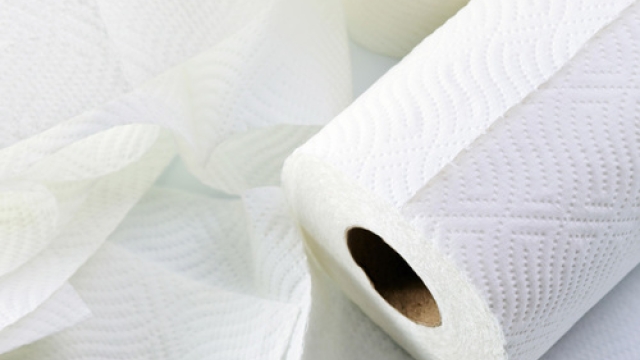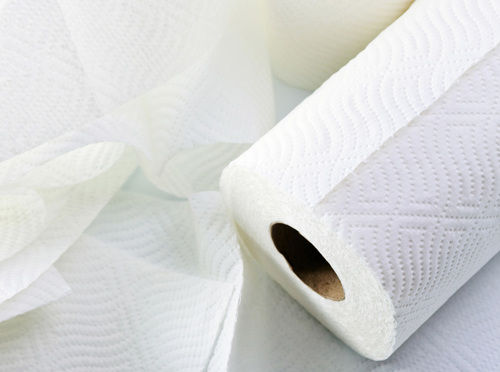The Art and Science of Papermaking: A Journey into the Heart of Manufacturing
Joe Howard -
Paper is a remarkable material that has been an integral part of human civilization for centuries. From the intricate calligraphy of ancient scrolls to the pages of our favorite books, paper brings our thoughts and ideas to life. But have you ever wondered about the journey this humble material takes before it ends up in our hands? Join us on an exploration into the art and science of papermaking, as we delve into the heart of this fascinating manufacturing process.
As we unravel the secrets behind paper manufacturing, we will embark on a guide that illuminates the intricate steps involved. This guide will serve as a valuable resource, offering insights into the techniques and machinery used to transform fibers into the delicate sheets that we write on, print on, and rely on in our daily lives.
But our exploration doesn’t stop there. We will also take a closer look at a specific branch of paper manufacturing: toilet paper. Yes, the indispensable product that graces countless bathrooms across the globe. Discover the intricacies of toilet paper manufacturing, from the selection of the fiber source to the delicate balance between strength and softness.
Join us on this captivating journey as we uncover the art and science behind papermaking, shedding light on the industry’s innovations, challenges, and the enduring allure of this versatile material. So, grab a bookmark and prepare to be amazed by the rich world of paper manufacturing.
History and Evolution of Papermaking
The journey of papermaking dates back centuries, tracing its roots to ancient civilizations around the world. From the first rudimentary forms of paper to the highly advanced techniques used today, the evolution of paper manufacturing is truly captivating.
In ancient China, the art of papermaking was discovered during the Han Dynasty (202 BCE – 220 CE). A Chinese court official named Cai Lun is credited with inventing the process that revolutionized the production of paper. Initially, it involved extracting fibers from materials like mulberry bark, hemp, and bamboo, which were then soaked, beaten, and pressed into thin sheets. These early papers served primarily for writing purposes.
As the craft of papermaking spread across the globe, different regions started to use their own unique materials. In ancient Egypt, papyrus, a type of reed, was used to create a form of paper. This durable material enabled the Egyptians to record their history and sacred texts. Similarly, the Mayans in Mesoamerica made paper from the inner bark of fig trees, commonly known as "amate."
With the passage of time, paper manufacturing underwent significant advancements. Techniques like easy bleaching, sizing, and watermarking were introduced in various cultures. In the 19th century, the invention of the Fourdrinier machine by the British papermakers Henry and Sealy Fourdrinier revolutionized the industry. This machine automated the papermaking process, enabling mass production and making paper more affordable and accessible.
Today, paper manufacturing continues to evolve with the advent of new technologies and environmental concerns. Companies are adopting sustainable practices, such as using recycled materials and reducing water consumption. The demand for specialty papers, including toilet paper, has also led to innovations in production techniques and quality control.
The history of papermaking is a testament to human ingenuity and the importance of this versatile material in our lives. Its evolution not only reflects advancements in manufacturing processes but also signifies the remarkable progress of civilizations throughout time.
The Science of Paper Manufacturing
In the world of paper manufacturing, science plays a vital role in every step of the process. From the selection of raw materials to the final product, a combination of chemistry and physics brings this everyday material to life.
The first step in paper manufacturing is the preparation of the pulp. Wood chips or recycled paper are broken down into fibers through a process called pulping. This involves the use of chemicals and heat to separate the cellulose fibers and remove any impurities. The length and quality of these fibers have a direct impact on the strength and texture of the final paper product.
Once the pulp is prepared, it is time for the papermaking machine to work its magic. Here, a slurry of pulp is spread onto a moving wire mesh, allowing water to drain away while the fibers begin to bond together. This process, known as filtration, relies on the principles of capillary action and gravity.
As the water drains away, the remaining wet mat of fibers is pressed to further remove excess moisture. This is achieved through the use of large rollers that exert pressure on the material. The level of pressure and the duration of the pressing stage are carefully controlled based on the desired thickness and density of the paper.
Throughout the entire papermaking process, a delicate balance of temperature, pressure, and chemical additives is maintained to ensure the production of high-quality paper. It is this scientific precision that lies at the heart of paper manufacturing, enabling us to enjoy the wide range of paper products we use in our daily lives, from books and magazines to toilet paper.
Process and Techniques for Toilet Paper Production
Toilet paper manufacturing involves an intricate process that combines both art and science. From sourcing raw materials to the final product, every step contributes to creating a high-quality toilet paper that we use daily. In this section, we will explore the process and techniques used in toilet paper production.
- Sourcing the Raw Materials

The first step in toilet paper manufacturing is sourcing the raw materials, primarily wood pulp. Cellulose fibers extracted from trees are used to create the soft and absorbent qualities necessary for toilet paper. Companies carefully select the type of wood pulp to ensure optimal texture and strength. Recycled paper or a blend of recycled and virgin fibers is also commonly used, promoting sustainability in the production process.
- Pulping and Drying
Once the raw materials are obtained, the pulping process begins. The wood pulp or recycled paper is mixed with water, creating a slurry-like mixture. This mixture is then heated and treated with chemicals to break down the fibers further and remove any impurities or ink residues. The resulting pulp forms a liquid consistency, which is then fed onto a large screen conveyor.
As the screen moves, water drains through it, leaving behind a moist layer of fibers. The next step involves pressing the fibers and squeezing out excess water, followed by the drying process. Large heated rollers rotate to remove remaining moisture, resulting in a continuous sheet of dried fibers ready for further processing.
- Rolling and Packaging
After the drying process, the continuous sheet of fibers is cut into individual sheets according to the desired size of the toilet paper rolls. These sheets are then fed into a machine that winds them tightly onto large rolls. At this stage, the rolls can either be converted into standard-sized toilet paper rolls or made into jumbo rolls for industrial use.
Toilet paper rolls undergo additional processes to enhance their softness and strength. Embossing patterns may be added to the sheets to improve the overall feel. Moreover, the rolls can be perforated to allow easy tearing, ensuring convenient usage for consumers.
Finally, the toilet paper rolls are packaged in various quantities, from small packs for household use to bulk packaging for commercial purposes. The packaging process may involve shrink-wrapping or traditional cardboard boxes, depending on the intended market and consumer preferences.
By understanding the process and techniques involved in toilet paper production, we can appreciate the artistry and precision required to create the daily essential we often take for granted. From the careful selection of raw materials to the meticulous manufacturing processes, each step is crucial in ensuring the creation of high-quality toilet paper that meets the needs of consumers worldwide.
Archives
- December 2025
- November 2025
- October 2025
- September 2025
- August 2025
- July 2025
- June 2025
- May 2025
- April 2025
- March 2025
- February 2025
- January 2025
- December 2024
- March 2024
- February 2024
- January 2024
- December 2023
- November 2023
- October 2023
- September 2023
- August 2023
- July 2023
- June 2023
- May 2023
- April 2023
- March 2023
- February 2023
- January 2023
- December 2022
- November 2022
- October 2022
- September 2022
- August 2022
- July 2022
- June 2022
- May 2022
- April 2022
- March 2022
- February 2022
- January 2022
Calendar
| M | T | W | T | F | S | S |
|---|---|---|---|---|---|---|
| 1 | 2 | 3 | 4 | 5 | 6 | 7 |
| 8 | 9 | 10 | 11 | 12 | 13 | 14 |
| 15 | 16 | 17 | 18 | 19 | 20 | 21 |
| 22 | 23 | 24 | 25 | 26 | 27 | 28 |
| 29 | 30 | 31 | ||||